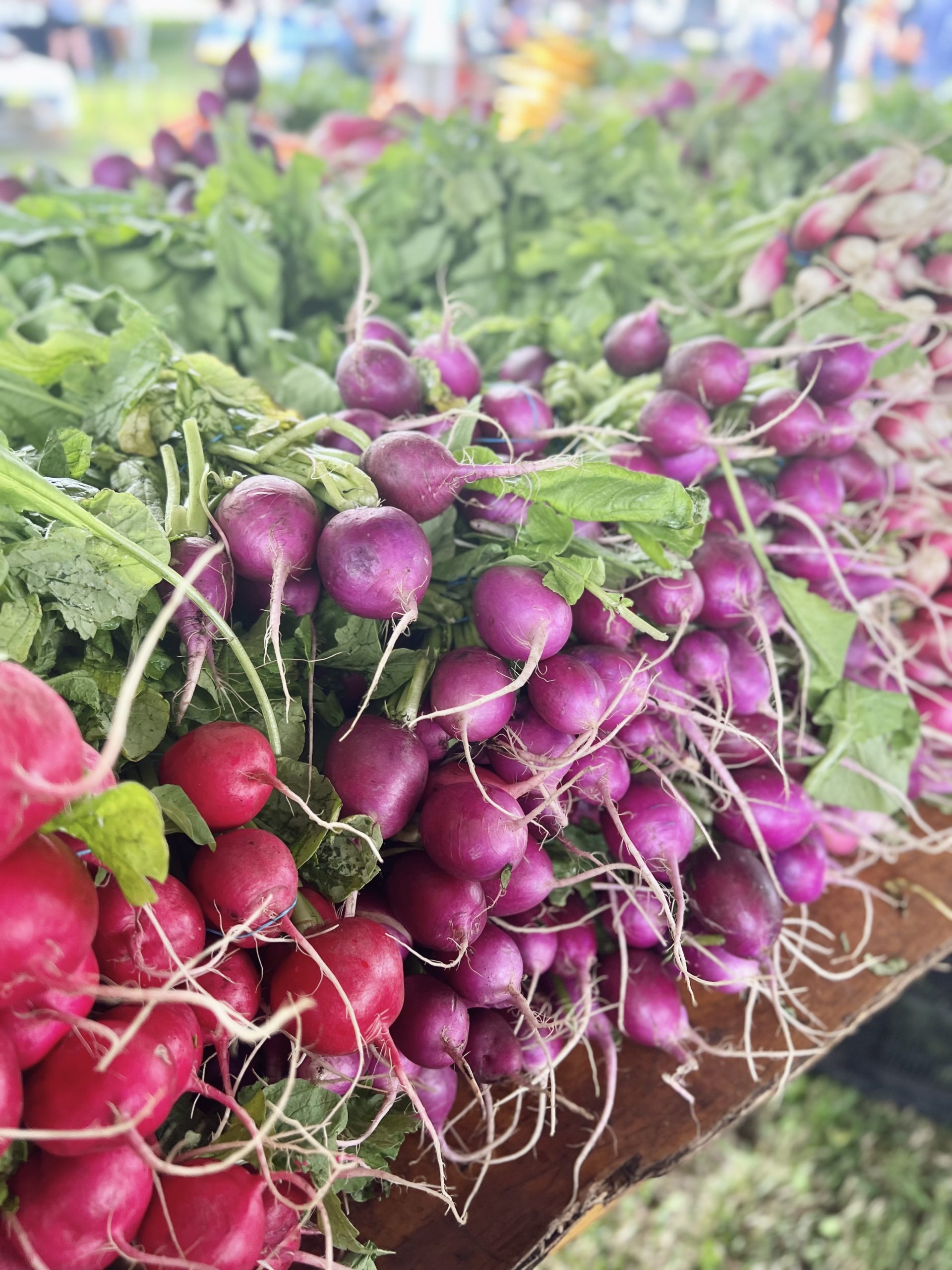Radishes are often overlooked in the world of vegetables, but they pack a powerful punch when it comes to nutrition and flavor. From their crunchy texture to their bold and spicy flavor, there are many reasons to love these pretty root vegetables. In this article, you’ll learn everything you need to know about radishes, from how to grow them to how to cook them, and everything in between. Plus, we’ll share some delicious recipes to help you add more radishes to your diet!

What are Radishes?
Radishes are a root vegetable that belongs to the Brassicaceae family, which includes other popular veggies like broccoli and cauliflower. They come in a variety of shapes and sizes, from small and round to long and slender, and while they are most commonly known for their bright red color, they can also be white, black, pink, or even purple.
Interesting Facts:
- Radishes are believed to have originated in China over 2,000 years ago.
- The word “radish” comes from the Latin word “radix,” which means root.
- In ancient Greece, they were considered a delicacy and were often served with honey and vinegar.
- They are one of the fastest growing vegetables – some varieties go from seed to harvest in just 25 days!

Health Benefits of Radishes:
Radishes are a nutritional powerhouse, packed with vitamins, minerals, and antioxidants. Here are just a few of their health benefits:
- They are low in calories and high in fiber, making them a great choice for weight loss.
- Radishes are rich in vitamin C, which can boost your immune system and help fight off infections.
- They also contain compounds like sulforaphane and anthocyanins that have been linked to lower cancer risk and improved heart health.
- They are also a good source of potassium, which can help regulate blood pressure and reduce the risk of heart disease.
Nutrition Information:
One cup (116g) of sliced radishes contains:
- Calories: 19
- Carbohydrates: 4g
- Fiber: 2g
- Protein: 1g
- Fat: 0g
- Vitamin C: 17% of the Daily Value (DV)
- Folate: 7% of the DV
- Potassium: 5% of the DV

Why Radishes are Great for Keto:
Radishes are a great vegetable to include in a keto diet because they are low in carbs and high in fiber. This means they can help you feel full and satisfied without compromising your carb limit. Because they are high in potassium, they help keep your electrolytes in balance. Plus, their spicy flavor can add a kick to any keto meal.
Culinary Uses:
Radishes are a versatile vegetable that can be used in a variety of dishes. Here are some popular ways to use them:
- Sliced thinly and added to salads for a crunchy texture and spicy flavor.
- Roasted in the oven with olive oil and sea salt for a crispy and flavorful snack.
- Pickled in vinegar and spices for a tangy and refreshing side dish.
- Grated and used as a garnish for tacos, sandwiches, or soups.

Popular Types and Their Uses:
There are many different types of radishes, each with its own unique flavor and texture. Here are a few popular types:
- Cherry Belle: a small, round red radish with a mild flavor
- French Breakfast: oblong with a red top and white bottom, with a slightly spicy flavor
- Watermelon: large and round with a green skin and pink flesh – has a sweet flavor
- Daikon: long and white, with a milder flavor, often used in Asian cuisine
How to Plant and Grow Radishes:
Radishes are easy to grow, making them a great choice for beginner gardeners. They prefer cool weather and well-drained soil, and can be planted either in the spring or fall. To plant them, simply sow the seeds directly into the soil, about 1/2 inch deep and 1 inch apart. Keep the soil moist, and they should be ready to harvest in about 3-4 weeks.

Common Pests and Control Methods:
Radishes are generally pest-resistant, but they can be susceptible to root maggots and flea beetles. To prevent these pests, try planting with companion plants like collard greens or marigolds, and cover the soil with a floating row cover to keep bugs away.
How to Harvest:
Here are some tips for harvesting radishes:
- Radishes are ready to harvest when the roots are 1-2 inches in diameter. Don’t let them get too big or they will be woody and bitter.
- Gently pull them out of the soil by their tops.
- Trim off the leaves and fine bottom roots.
- Rinse them thoroughly with water.
- If you’re growing multiple varieties, be sure to label them so you know which is which!
How to Store:
Radishes should be stored in the refrigerator, either in a plastic bag or wrapped in a damp paper towel. They’ll keep for up to a week, but are best eaten within a few days of harvesting.

Whether you’re looking to add some crunch to your salads or a replacement for potatoes in your keto meals, radishes are a versatile vegetable that should not be overlooked.

